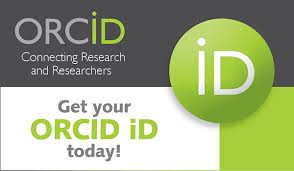Contrast Connectors In English Written Composition In B1 Efl Adult Learners
Resumen
This study explores how young adult EFL learners use discourse connectors to structure ideas and establish relationships in spoken communication. Through a speech task on the topic “What is a hero?”, 50 B1-level learners were analyzed for using additive, sequencing, contrastive, causal, and exemplification connectors. The results reveal that while learners demonstrate a basic ability to use connectors like and, but, and because, their range remains limited. More complex connectors such as for example and so appeared infrequently, indicating a reliance on familiar expressions. The findings highlight a developmental stage in discourse competence, where learners can construct coherence but require further instruction to diversify their connective strategies. This research emphasizes the need for pedagogical focus on cohesive devices to support more effective and varied spoken discourse in English.
Palabras clave
Referencias
Adam, J.-M. (2001). Les textes: Types et prototypes. Paris: Armand Colin.
Bolton, K., Nelson, G., & Hung, J. (2002). A corpus-based study of connectors in student writing. International Journal of Corpus Linguistics, 7(2), 165–182. https://doi.org/10.1075/ijcl.7.2.02bol
Crewe, W. J. (1990). The illogic of logical connectives. ELT Journal, 44(4), 316–325. https://doi.org/10.1093/elt/44.4.316
Granger, S., & Tyson, S. (1996). Connector usage in the English essay writing of native and non-native EFL speakers of English. World Englishes, 15(1), 17–27. https://doi.org/10.1111/j.1467-971X.1996.tb00089.x
Halliday, M. A. K., & Hasan, R. (1976). Cohesion in English. London: Longman.
Halliday, M. A. K., & Matthiessen, C. M. I. M. (2014). Halliday’s Introduction to Functional Grammar (4th ed.). London: Routledge.
Hyland, K. (2004). Genre and Second Language Writing. University of Michigan Press.
Jalilifar, A. (2008). Discourse connectors in Iranian EFL learners’ compositions. Asian EFL Journal, 10(1), 114–139.
Lei, L. (2012). Linking adverbials in academic writing on applied linguistics by Chinese doctoral students. Journal of English for Academic Purposes, 11(3), 267–275.
Martín Zorraquino, M. A., & Portolés, J. (1999). Los marcadores del discurso. In I. Bosque & V. Demonte (Eds.), Gramática descriptiva de la lengua española (Vol. 3, pp. 4051–4213). Madrid: Espasa Calpe.
Uçar, S. (2023). Investigating discourse markers in argumentative essays written by EFL learners. Journal of Language and Linguistic Studies, 19(1), 101–119.
DOI: https://doi.org/10.23857/pc.v10i5.9476
Enlaces de Referencia
- Por el momento, no existen enlaces de referencia
Polo del Conocimiento
Revista Científico-Académica Multidisciplinaria
ISSN: 2550-682X
Casa Editora del Polo
Manta - Ecuador
Dirección: Ciudadela El Palmar, II Etapa, Manta - Manabí - Ecuador.
Código Postal: 130801
Teléfonos: 056051775/0991871420
Email: polodelconocimientorevista@gmail.com / director@polodelconocimiento.com
URL: https://www.polodelconocimiento.com/













